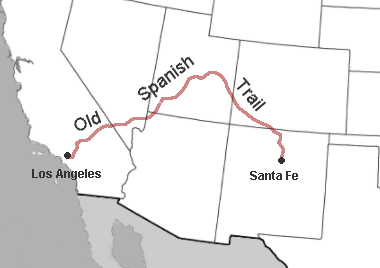https://digital-desert.com/old-spanish-trail/

The Old Spanish Trail is a historic trade route that connected Santa Fe, New Mexico, to Los Angeles, California, and passed through what is now the southwestern United States, including parts of Nevada. The trail was established in the early 19th century and was primarily used for transporting goods, primarily luxury items like furs, mules, and horses.
Here are some key points about the Old Spanish Trail:
- Origins: The Old Spanish Trail is not Spanish in origin. Mexican and American traders established it in the early 19th century. The trail network was developed to extend the more well-known Santa Fe Trail, connecting Santa Fe with California.
- Trade and Commerce: The primary purpose of the trail was to facilitate trade between the Mexican provinces of New Mexico and California. Goods from Santa Fe, such as woolen goods and furs, were traded for California horses and mules.
- Route: The trail had several branches, but the most common route passed through present-day Arizona, southern Utah, Nevada, and California. It roughly followed the course of the Virgin River in what is now southwestern Utah and crossed the Mojave Desert before reaching the coastal areas of California.
- Difficulty and Challenges: Traveling the Old Spanish Trail was challenging. The journey was perilous because of the harsh desert environment, lack of water, and difficult terrain. Many sections of the trail required careful navigation to ensure the safety of the travelers and their livestock.
- Decline: With the opening of the Santa Fe Railroad in the late 19th century, the Old Spanish Trail lost its significance as a major trade route. The development of more accessible transportation options led to its decline.
- Legacy: Despite its relatively short period of use, the Old Spanish Trail left a lasting impact on the history and development of the American Southwest. Today, parts of the trail are preserved, and efforts have been made to recognize its historical importance.
The Old Spanish Trail is a testament to the interconnected history of the American Southwest and the role of trade routes in shaping the economic and cultural landscape of the region during the 19th century.